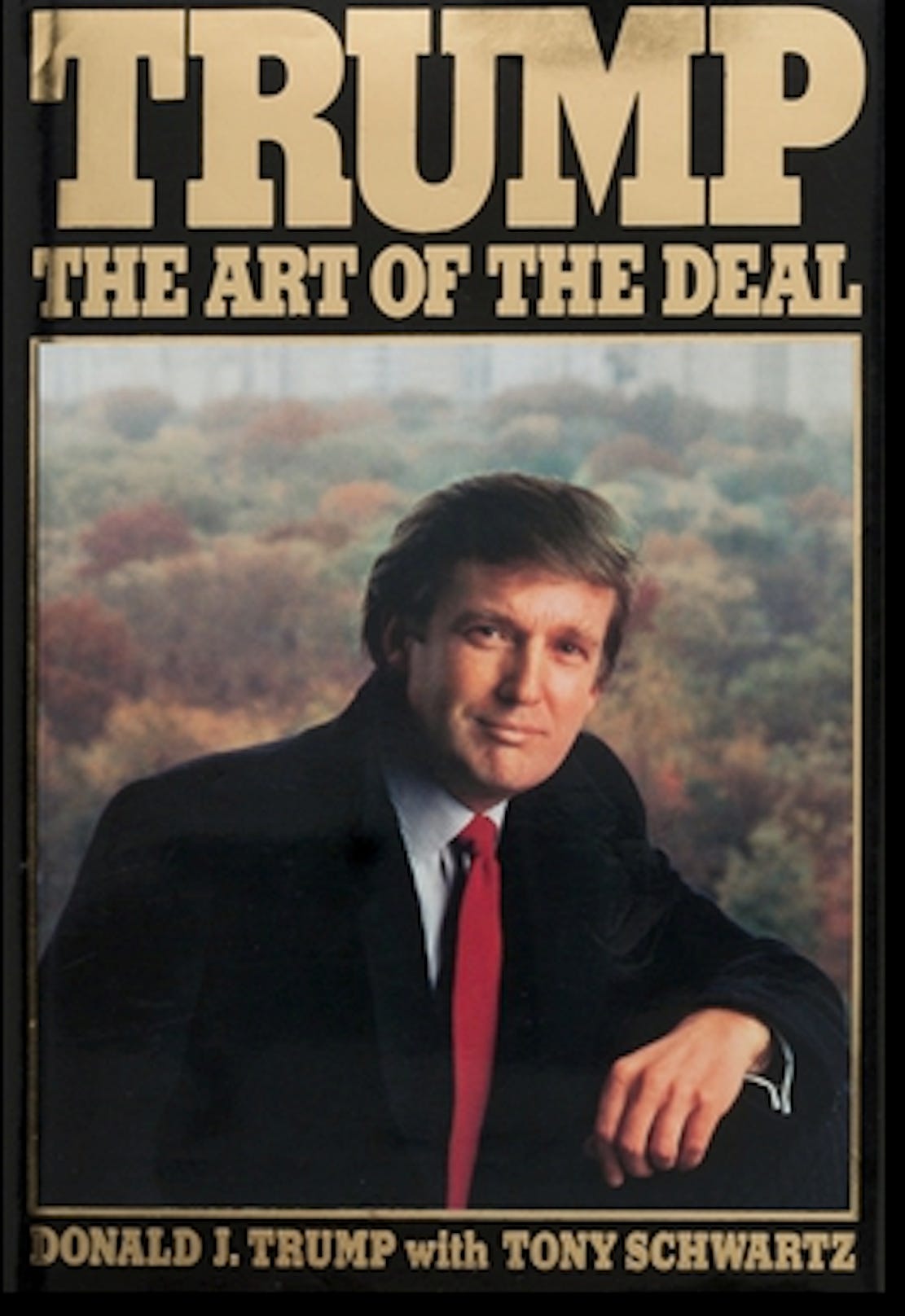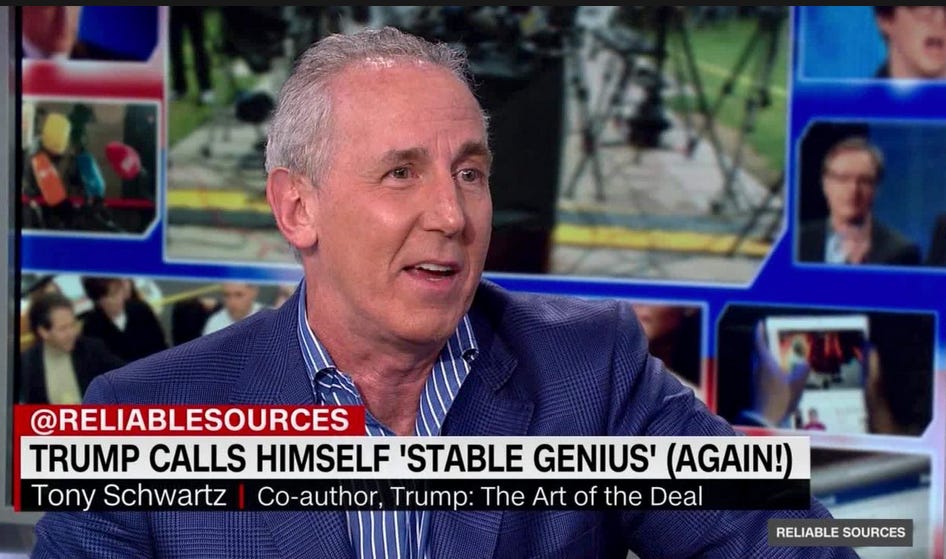Two books by two leaders who rose to lead the worlds most Powerful military
1925's Mein Kampf by Adolph Hitler and 1987's The Art of the Deal by Tony Schwartz. Similarities and differences.
In 1925 Volume 1 of Hitlers manifesto was published. Mein Kampf ‘My Struggle.’ The book was edited first by Emil Maurice, then by Hitler's deputy Rudolf Hess. Volume 2 followed in 1926. After slow initial sales, the book became a bestseller in Germany following Hitler’s rise to power in 1933. The book played a defining role in Hitler’s rise to power.
According to a 1990 Vanity Fair interview, Ivana Trump told her lawyer Michael Kennedy that her husband, Trust Fund mogul Donald Trump, then a leading Republican presidential candidate, kept a book of Hitler's speeches near his bed.
The reading material that Trump relied on to formulate his hostile takeover of the White House was written by Adolf Hitler.
In 1987 The Art of The Deal was Published, written by Tony Schwartz. Part memoir and part business-advice book, it was the first book credited to Trump. The book played a defining role in Trump’s rise to Power, building his brand with the Christian Conservative Idiot Right, and especially the Christian Wresting Community. It reached number 1 on The NYT Bestseller list, stayed there for 13 weeks, and altogether held a position on the list for 48 weeks.
Schwartz called the book his "greatest regret in life, without question," and both he and the book's publisher, Howard Kaminsky, disclosed that Trump had played no role in its writing. The Art of Trumps Steal is a deceitful nonsense paid for by a rich guy hiring help to promote his his brand that is a string of lies.
Schwartz was hired to write the book for $250,000 upfront; Trump assigned him half of the Royalties. Schwartz later admitted that his motivation was purely financial, and needed the money to support his new family.
Trump’s plagiarizing of Hitlers methodology to seduce the same Christian Conservative Right base who so loved the Fuhrer, finds many experts on Social Media comparing Mein Kampf to Art of My Deal, having read neither.
Pick a chapter from ‘Art of the Deal’, any chapter, then compare that to just one paragraph from Mein Kampf. One is pure narcissistic gaslighting by an opportunist out to build a brand that is making dumb-people obey like propagandized Nazis did to Hitler. The other is a firm political manifesto by a leader that continues to interest scholars of Fascism to this day.
Here’s Chapter 11 from Volume 2.
11. PROPAGANDA AND ORGANIZATION
The year 1921 has become important for me and for the Movement in many ways.
When I first joined the German Workers Party, I immediately took charge of all propaganda. I knew this was the most important area at the time. In the beginning it was not as necessary to rack your brain over the organizational issues, but it was important to distribute the Movement’s idea to a larger number of people. Propaganda must come before the structural details of organizing a movement so that we can win over the body of people needed to do the work of the organization. I have never liked to be too hasty or to be overly concerned with book-keeping when it comes to any kind of organization —the result is usually a lifeless mechanical thing instead of a living organization. An organization, or a movement, grows naturally through an organic process of evolution and development.
Once ideas have taken hold of a certain number of men, they will naturally form their own order, and this build up is what creates something of great value. Even in this case, we cannot forget about human weakness, which, at least in the beginning, can cause individuals to resist the influence of a superior mind. If an organization is laid out mechanically, this creates a real danger that someone appointed as an officer, someone who has not yet been tested or proven himself, someone who may not be qualified at all, will try to prevent more capable members within the Movement from rising to positions of power out of jealousy.
This kind of damage can be fatal, especially if the movement is still young.
For this reason it is best to start off distributing ideas from one central figure. Then, as the body of people who learn about the idea grows to an acceptable point, we can search through them and examine them carefully to find leaders. We frequently see that men who at first appear insignificant turn out to be born leaders.
However, it would be a serious mistake to view an abundance of theoretical knowledge as proof of leadership qualities or as a sign of organizational skill which are both necessary for a leader. The opposite is usually true. Great theorists are rarely great organizers. The greatness of a theorist lies in his ability to understand and establish abstract laws that are correct, while the organizer must primarily be an expert in understanding the human mind.
The leader has to take a man as he is, therefore he must understand him. He can neither overestimate him nor underestimate him, either individually or when looking at a group of men. On the contrary he must try to take weakness and animal-tenacity equally into consideration; the organizer must evaluate all factors in order to create a structure which is filled with animated, constant power as if it were a living being. Then the organization will be capable of embodying an idea and paving the way for its success.
It is even more rare to find a great theorist who is also a great leader of men. A leader is much more likely to be an agitator. Those who have a lighter temperament may not like this assertion; however, the truth in it is obvious. An agitator has to understand human nature if he is able to make the masses absorb an idea, even if he only manipulates their emotions.
Such emotional manipulation still makes him better qualified for leadership than the theorist who does not know how men think or how the world works. To be a leader means having the ability to move the masses. The ability to form ideas has nothing to do with the ability to lead. In this connection it is quite pointless to argue over which is of greater importance: to conceive human ideals and aims or to make them a reality. As it happens so often in life, one would be meaningless without the other. The most beautiful theoretical idea has no purpose and has no value unless a leader directs the masses towards that idea.
On the other hand, there would be no use for the energy or genius of a leader if the clever theorist did not establish a goal for mankind to struggle toward. The combination of theorist, organizer, and leader in one person is the rarest thing to be found upon this planet; this combination will create a great man.
As already said, I focused my attention on propaganda in the early days of the Movement. It was the means to implant the new doctrine in a small nucleus of men who could be used to form the first elements of an organization. The goals of propaganda usually reached well beyond those of the organizer. If a movement intends to tear down one world order and replace it by a new one, then its leaders must clearly understand the following principles:
Each movement must first sift through the body of people that has been attracted and divide them into two large groups - followers and members. It is the task of propaganda to win followers and it is the task of the organization to win members. A follower understands and agrees with the movement’s goals; a member is ready to fight for those goals.
The entire book is on Download Here, for those who have strong opinions on Mein Kampf having never read it.






